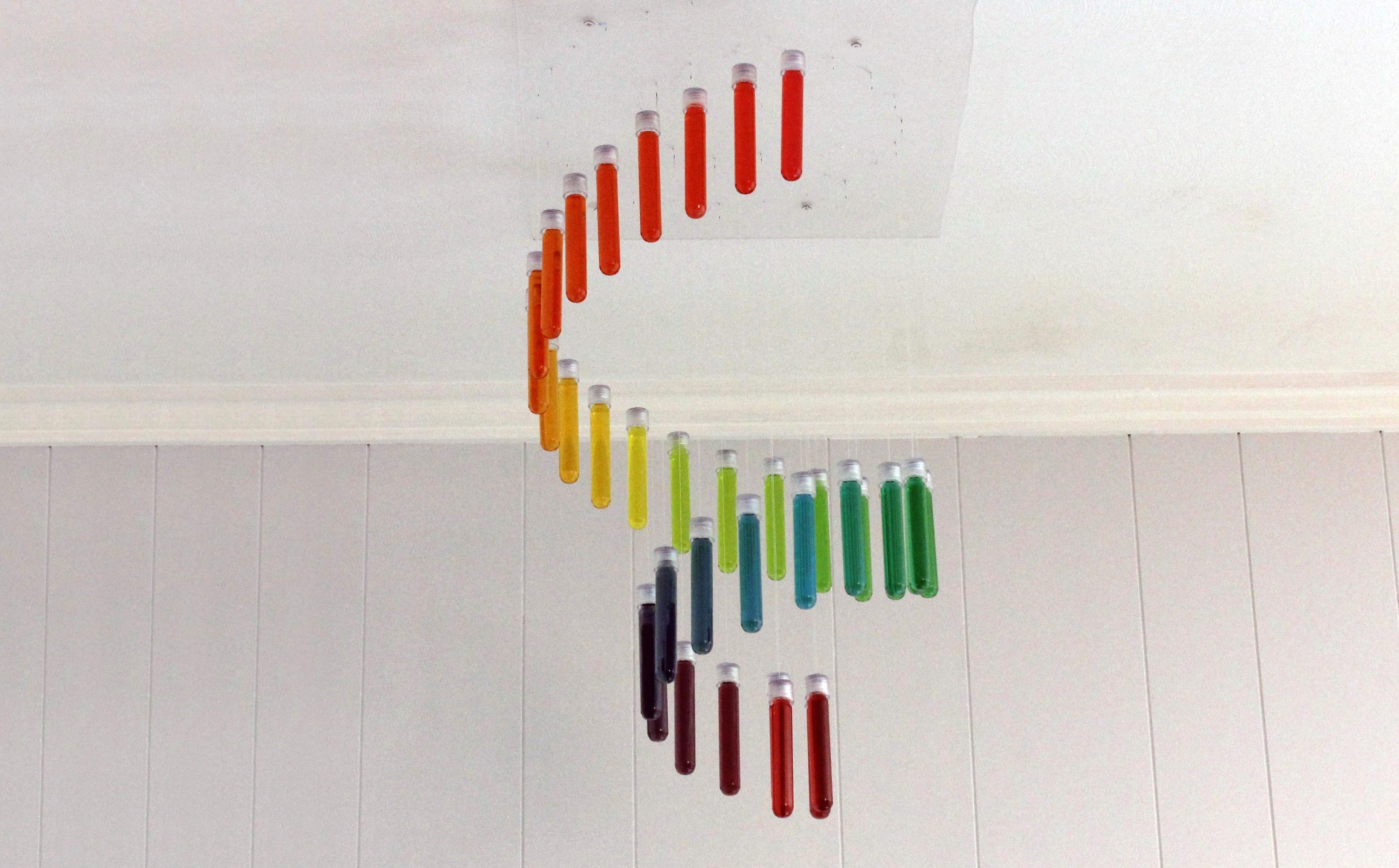A while ago I picked up a bunch of glass test tubes that were being thrown out. At the time I didn’t have a specific project in mind for them, but I figured that I could come up with some way to use them. Then, I came across a design by Etsy user PaniJurek for a chandelier made from test tubes that were filled with colored water. I really liked the way that you can use the test tubes to make any color pattern that you want. So I decided to make my own version of the project.
SAFETY NOTE: Any time you are working with used laboratory glassware, you need to know what it was used for and how it was handled. In my case, I got these vials from a water testing lab. The only thing that was in them was tap water samples. I also know for a fact that the vials were sterilized with an autoclave before disposal, so I am confident that these vials are safe to use. Other labs might be working with dangerous chemicals or pathogens. Don’t use vials unless you are 100% sure that they are safe to use. When in doubt, play it safe and just get a new set of vials to work with.



